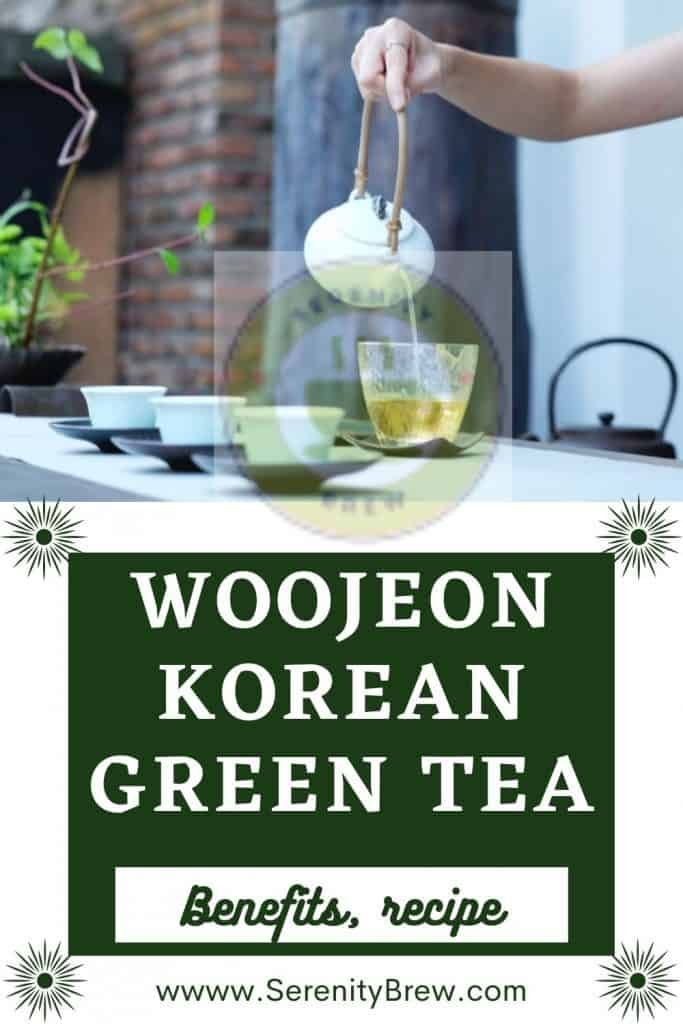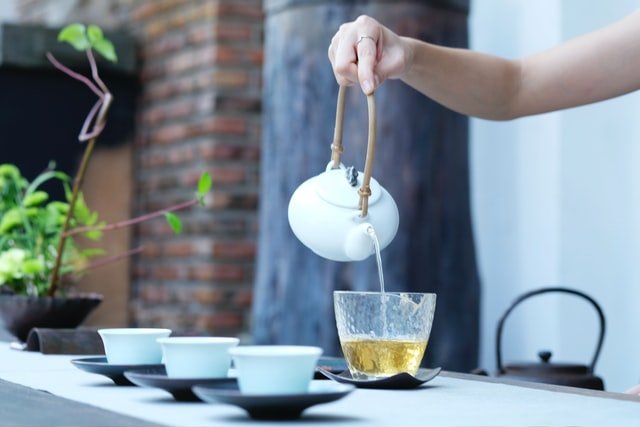
In the south of Korea, a true jewel among green teas is produced : Woojeon. Specifically, this variety is made on the volcanic island of Jeju Do and the provinces of Jeollanam-do and Gyeongsangnam-do. Precisely, the specific characteristics of its soils influence the final flavor of the tea leaves.
This flavorful tea, whose name means “before the rains,” is picked early, during the first half of April, just before Gokwoo, one of the 24 divisions of the Korean lunar calendar, and the monsoon arrives in Korea. Now, what’s so special about Woojeon? Let’s find out below.
Tea in korea
Around the year 668, tea was introduced to Korea. Legend has it that, during the Shilla dynasty, it was the Buddhist monks who brought Camellia sinensis to the country in the form of seeds.
Some time later, between the years 918 and 1392, the Korean tea culture began to grow. In the beginning, the habit of drinking tea was common among the aristocrats and court members of the Koryo dynasty; however, little by little, it began to expand. At least until Confucianism became popular. At that time, the country’s teapot culture declined, remaining mainly among Buddhist monks.
The renaissance of tea culture in Korea took place in the 1980s, when both consumption and production increased considerably. Did you know that today Korea produces almost as much green tea as Japan ? This gives you a measure of the immense growth experienced in recent years.
Woo Jeon Production
It should be noted that in the process of making Woojeon, both Japanese and Chinese influence are noticeable since the procedures of both countries are intermingled.
Like all teas, Woojeon is made from the Camellia sinensis plant. As we already mentioned, at the beginning of April the collection of shoots and small leaves begins.
Once harvested, the leaves are steamed or roasted in woks to stop oxidation. For this reason, it is common to hear people wonder if it is Deoukkumcha tea, that is, roasted, steamed.
The reality is that each tea company uses a different process; therefore, Woojeon can range from a more herbal to a more roasted flavor, depending on its processing.
Regardless of the method chosen to stop the oxidation, after it the leaves are rolled by hand or with the help of machines and, finally, they are finished drying to ensure the preservation of their quality, flavour, color and aroma.
It is worth noting that this variety is difficult to find outside of Korea due to its high demand in the country. It is an exclusive tea with a high price.
The taste of Woojeon
Before tasting it, pay attention to its leaves; in this case, the strands are dark and irregular, with an intense vegetable and toasted aroma and even a slight hint of dried fruit.
Once wet, the strands take on a yellowish color and the infusion looks yellow-green in the cup. With a soft and nuanced character, it feels a little bitter at the beginning and sweet at the end, with a medium astringency and a touch of lemongrass.
It is a complex and sophisticated green tea that surprises with its nuances, both aromatic and on the palate. Without a doubt, it is perfect for demanding palates.
Health benefits
Although we have not found specific studies on the health benefits of Woojeon tea, it is a green tea, so it shares the properties of the family.
One of them is a high content of antioxidants, substances that fight free radicals, protecting the body from oxidative damage. Many scientific studies have linked antioxidants to the prevention of degenerative diseases such as cancer, Alzheimer’s and cardiovascular disease, as well as to combat premature aging.
On the other hand, being a green tea, it would help improve digestion, especially before large meals, and would act on the effects of stress, allowing the body to relax.
How to make a perfect cup of Woojeon

When infusing tea leaves, it is very important to pay attention to several things: the quality of the water, the temperature of the water, the quality of the tea (and the quantity to infuse) and, of course, the steeping time.
Regarding the quality of the water, experts usually recommend using water with a low lime content. It is not necessary to opt for bottled water, you can use tap water and, if it is very “hard”, it is advisable to use a water softener.
On the other hand, the temperature at the time of infusing the leaves is essential to prevent the tea from becoming bitter. To do this, if you are fond of drinking tea, we recommend you buy a thermometer, without a doubt one of the most practical teapot gadgets. In the particular case of Woojeon, the appropriate temperature is 80°C and the resting time should not exceed 3 minutes.
Let’s see below the step by step to prepare an excellent cup of Woojeon at home:
Ingredients:
- 1 teaspoon of Woojeon (about 2g)
- 1 cup of water
Elaboration:
- Heat the water to 80°C. If you don’t have a thermometer at home, stay close to the kettle and as soon as you see small bubbles start to appear, turn off the heat.
- Stir the Woojeon leaves into the pot. Remember that the pot must be large enough to allow the leaves to expand and release their essential oils, aroma and flavor.
- Let infuse between 2 and 3 minutes, depending on how concentrated you want your tea.
Note: if you like to drink a strong green tea, do not increase the infusion time: it is better to increase the amount of tea leaves per cup. Remember that too much rest can make your green tea bitter.
Woojeon is a different green tea, smooth and delicate, full of nuances capable of conquering the most complex tea drinker. If you have the opportunity to get your hands on it, do not hesitate to try it.
